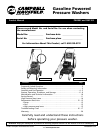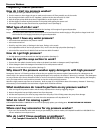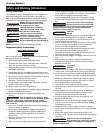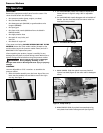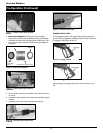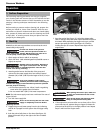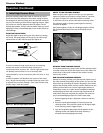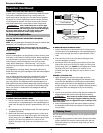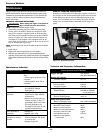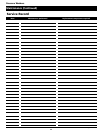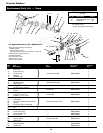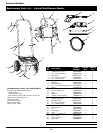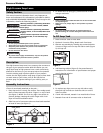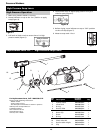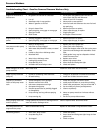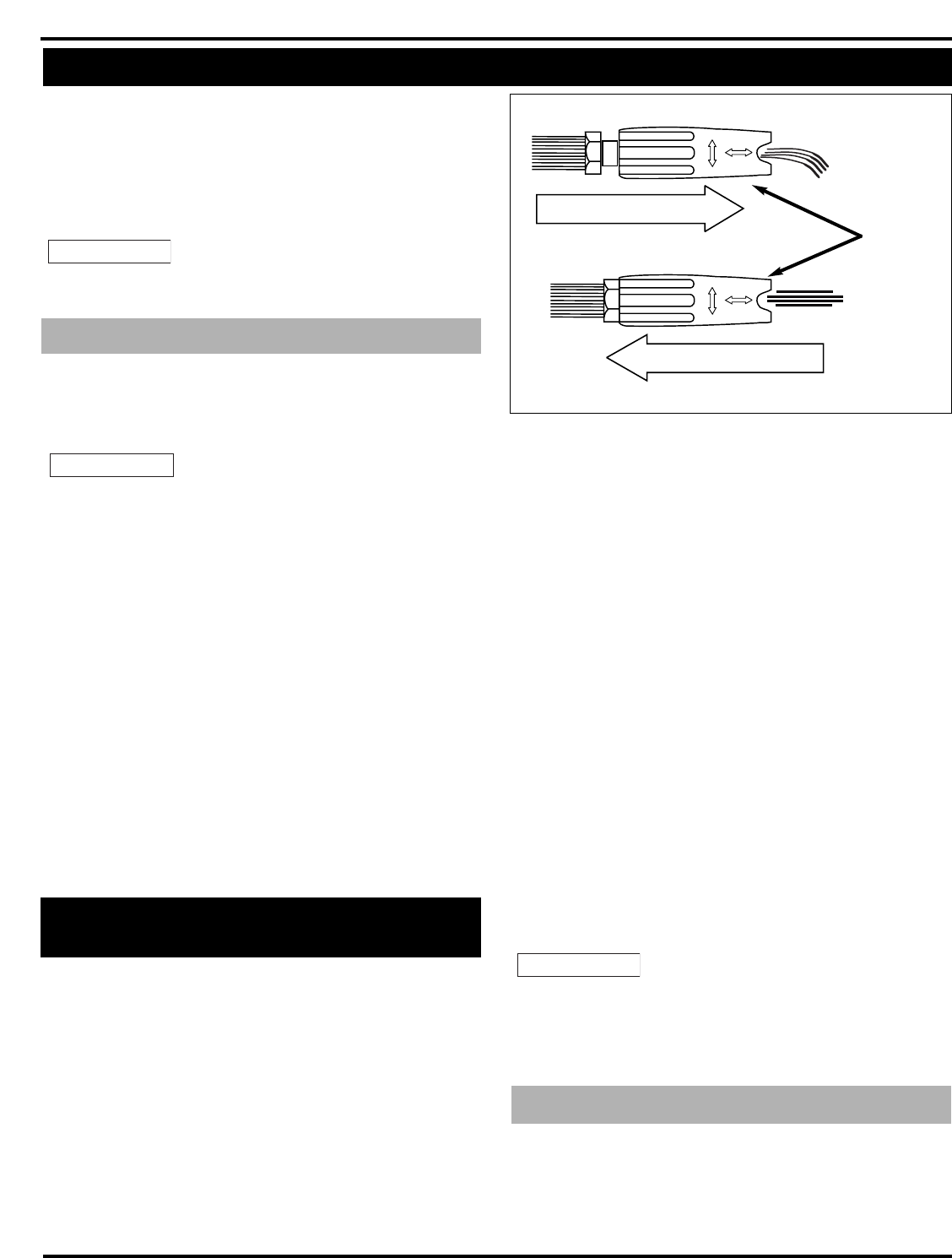
www.chpower.com
Pressure Washers
Operation (Continued)
TURBO LANCE (NOT INCLUDED WITH ALL MODELS)
A turbo lance is equipped with a permanently attached nozzle .
This nozzle, sometimes referred to as a rotary nozzle, can
significantly reduce cleaning time. The turbo nozzle combines
the power of a narrow high impact stream with the efficiency
of a 25 degree fan pattern. The turbo nozzle swirls a narrow
high impact stream into a cone shape to clean a larger area.
Since a turbo nozzle uses a narrow high
impact stream, only use a turbo lance in
applications where the cleaning surface cannot be damaged
by narrow high impact spray. The turbo nozzle is NOT
adjustable and cannot be used to apply detergent.
USE THE INSTRUCTIONS APPROPRIATE FOR MODEL
PURCHASED
NOTE: Use only detergents formulated for pressure washers.Test
detergent in an inconspicuous area before use.
Never slide the nozzle from low to high
pressure or from high to low pressure when
the gun is triggered.
DETERGENTS
The use of detergents can dramatically reduce cleaning time
and assist in the removal of difficult stains. Many detergents
are customized for pressure washer use on specific cleaning
tasks. Pressure washer detergents are as thick as water.
Using thicker detergents – like dish soap – will clog the
chemical injection system and prevent the application of the
detergent.
Once applied to a cleaning surface, detergents take time to
break down dirt and grime. Detergents work best when applied
at low pressure.
You can effectively clean surfaces by combining the chemical
action of detergents with high pressure rinses. On vertical
surfaces, apply the detergent starting at the bottom and work
your way upward. This method prevents the detergent from
sliding down and causing streaks. Begin high pressure rinsing at
the bottom and work your way upward. On particularly tough
stains, use a brush in combination with detergents and high
pressure rinsing.
A. MODELS WITH DETERGENT TANKS
1. Follow manufacturer’s label directions for mixing correct
concentrations of soap/detergents. The soap/detergent to
water ratio through the pump is approximately 12% (1 to
8).
2. Pour detergent into the detergent tank. The tank capacity is
1.5 gallons (5,67 liters).
3. Place hand around the spraying end section of the lance
(the section that turns from left to right). Pull firmly and
quickly away from you. (NOTE: Do not adjust lance while
spraying.) The lance will extend 1/2” and be in low
pressure (see Figure 18). Soap can only be drawn in low
pressure.
NOTICE
NOTICE
B. MODELS WITHOUT DETERGENT TANKS
1. Follow manufacturer’s label directions for mixing correct
concentrations of soap/detergents. The soap/detergent to
water ration through the pump is approximately 12% (1
to 8).
2. Insert the filter end of the clear plastic detergent tube
into the detergent container.
3. Place hand around the spraying end section of the lance
(the section that turns from left to right). Pull firmly and
quickly away from you. (NOTE: Do not adjust lance while
spraying.) The lance will extend 1/2” and be in low
pressure (see Figure 18). Soap can only be drawn in low
pressure.
GENERAL CLEANING TIPS
1. Apply the detergent so that it thoroughly covers the
cleaning surface. Apply the detergent from bottom to top
to prevent the detergent from sliding down and streaking.
Wait a couple of minutes for the detergent to break down
the dirt and grime. Use a brush to lightly scrub heavily soiled
areas. Never allow the detergent to dry on the cleaning
surface.
2. To rinse or to return the nozzle to high pressure, release the
trigger and slide the nozzle to the high pressure setting.
Never make the
nozzle pressure
adjustment
with the gun triggered. Adjusting the high-
low nozzle when the gun is triggered can result in damage to the
seals in the nozzle.
3. After using detergents, flush the suction system by placing
the detergent suction tube into a bucket of clean water or
rinse out tank.
You can control the cleaning power of your pressure washer
in two ways:
1. Adjust the spray pattern at the nozzle. Choose the widest
pattern possible for spraying when starting the job and
adjust the pattern to a narrower angle until you find a
suitable pattern.
NOTICE
Gasoline Powered Units Equipped with Adjusting
Nozzle
4. Detergent Application
Low Pressure
High Pressure
Figure 18 - Adjusting nozzle for pressure
Nozzle
5. Cleaning Power
8



